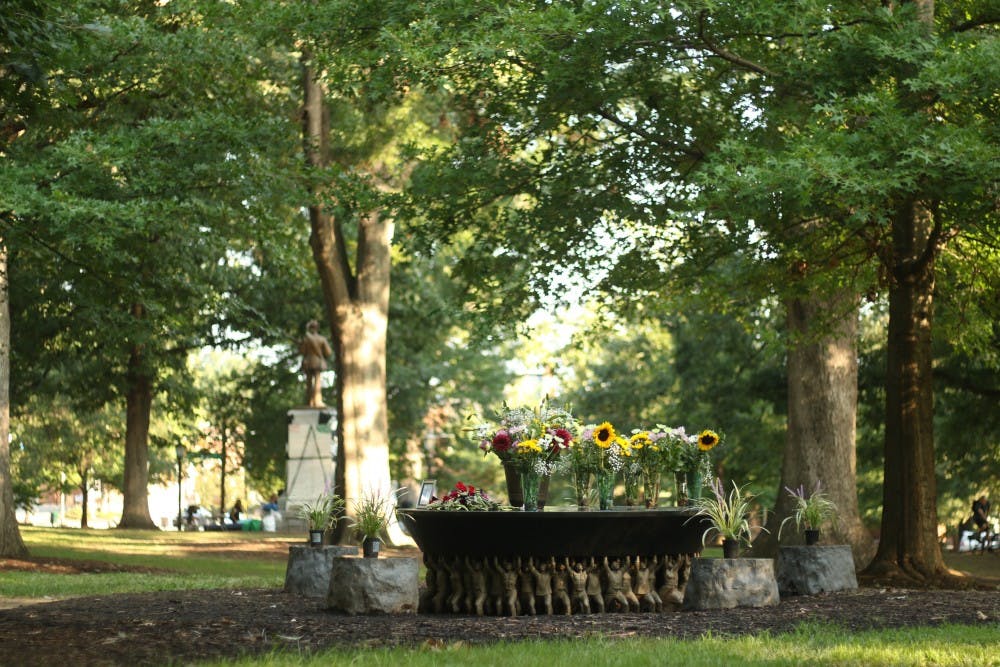Underneath the changing leaves in McCorkle Place stand Silent Sam and the Unsung Founders Memorial — symbols of the University’s rich history. But underneath those monuments lie the stories of the University’s founding that have not been told, stories that the Chancellor’s Task Force on UNC-Chapel Hill History was appointed to tell.
The task force is co-chaired by Winston Crisp, vice chancellor for student affairs, Amy Locklear Hertel, director of the American Indian Center, and Jim Leloudis, professor of history and associate dean for Honors Carolina. It was appointed in 2015 by Chancellor Carol Folt, following the Board of Trustees’ direction to teach and curate a full and accurate history of the University after the vote to rename Saunders Hall to Carolina Hall.
Within the history of how this University was built, three individual narratives stand out: the first students who walked the quiet pathways of McCorkle, the enslaved people who built them and the indigenous people who were on this land before the University was even founded.
Through projects that will enrich, renovate and contextualize McCorkle, Silent Sam and Unsung Founders, the task force will provide the public with that history.
“It will help us to understand this place that we all hold so dear in such a significant way,” Hertel said.
The Task Force
McCorkle Place is the second directive Folt gave the task force, which she announced in a statement to campus in September 2015.
The first task was the contextualization behind the BOT’s decision to rename Saunders Hall to Carolina Hall. They created an exhibit for the lobby of Carolina Hall, completed in November 2016, explaining the broader history of William Saunders in the state and the University.
Now, the task force is tackling McCorkle, using the space and monuments within it to tell the history of the University before, around and after its founding in the 18th century. They developed a three-step plan to be enacted through telling those three main stories.



